Impressive and enchanting despite the stigma of 24 years of abandonment, the Stadium has been brought back from oblivion, thanks to the magic of the city of Vitrolles and the Festival d’Aix, with the help of NEXO, Yamaha and the efforts of Texen, for five performances of Gustav Mahler’s Symphony No. 2, the Resurrection Symphony.

We were delighted to be invited to get a behind-the-scenes look at the story with – just to name a few – Francois Deffarges from NEXO, Thomas Goeuriot from Texen, and Quentin Delisle, who was holding down the FoH mix on the day we came.
Without getting into the causes of this prolonged hiatus in the use of the Stadium, the idea to stage Mahler’s Resurrection there despite the many technical difficulties that had to be overcome, sounds like the best idea of 2022, and even beyond, since the partnership with the Festival d’Aix will continue for a few years to come.

For this Romeo Castellucci production, 400 tons of soil were poured into the hall on top of an elevated wooden deck, providing a very large performance area for the performers and extras.
The edge of this “earthy” platform borders on the pit for the chorus and orchestra, both of which are placed on level 0, on the Stadium’s ground level.
Finally, a word about the seating, which was reconfigured by cleverly cannibalising the seats that were still operable. Over the years that it has been left unoccupied, this venue has literally been stripped of every valuable object, including metal, circuit breakers and electrical wires, with extraordinary meticulousness, and what has not been stolen has been ruined by man or time.

The Stadium, which is still sitting on red bauxite residue, underwent essential safety work in order to accommodate the public, albeit with a reduced capacity.
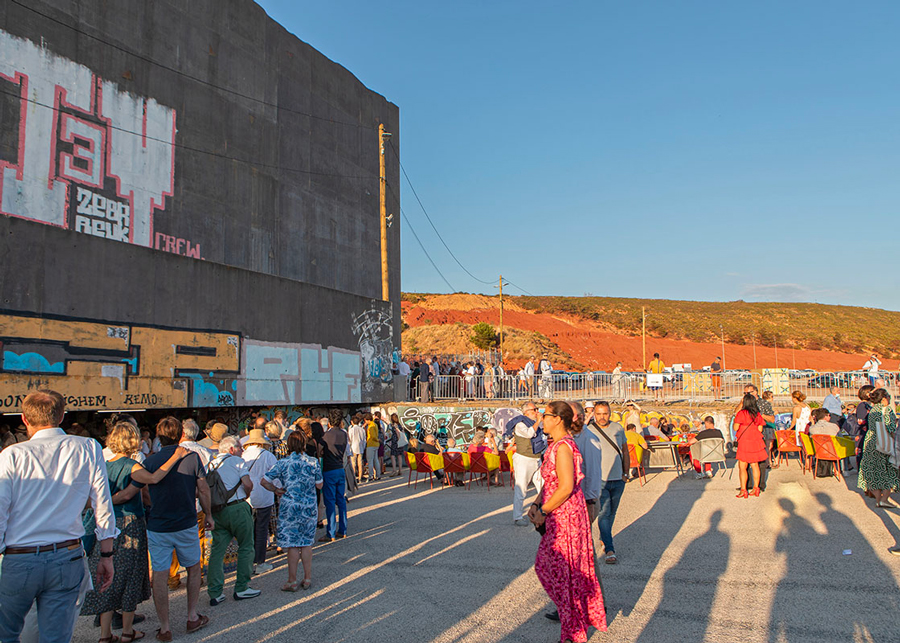
The sound was provided by a collaboration between Yamaha for the mixing and the immersive object matrixing, NEXO for the distributed sound system and the monitors, and Texen for the supply of a large part of the package, the deployment of the whole system, as well as the assembly and management of the technical team.
The whole thing was conceived and coordinated by Rémy Bréan, who knew how to adapt the artistic requirements at two different paces, that of the Producer and then that of the Musical Director, in an environment that was, to say the least, unusual for a concert of this type and with an obligatory sound system. It was also Rémy who put together the technical team and formalised the technical installation documents.


We begin our visit to the Stadium – the cube designed by the famous architect Rudy Ricciotti – with François Deffarges from NEXO…
François Deffarges : We have some important products. The speakers for the choirs in the pit on the right and left sides of the orchestra are compact ID24s and super-compact ID14s.
The same types are also used in large numbers in the orchestra as monitors, supplemented by a few P12s where more SPL and extension in the bass are required.
SLU : Geo M6s on little stands along the “earthy stage”…
François Deffarges : Those serve as front fills and, using our processing, they pull the image downwards. Thanks to their very tight vertical coverage of 10°, they pass right over the microphones and the orchestra without creating any spill. On either side of the stands we have six ID84 columns positioned on their subs, and to complete the distributed coverage there are five P15s at the top of the bleachers in the distance, and finally six P12s above the audience pointing downward. At the far end of the stage, for a specific one-off effect, we have a pair of P12s.

SLU : And for the front…
François Deffarges : Because the centre point is not critical in a classical scenario, the choice was made to place six arrays of four GEO M12 elements each, of which the top three boxes are 1210s (10° vertical coverage) and the bottom three are 1220s (20° vertically). The top three open at 80° horizontally, the bottom one at 120°.
This means that the coverage is optimised, precise and never distracts from the scenography, even from the top of the stands. The arrays are spread over 40 metres and the stage is even wider. Apart from the desire to deliver immersive sound, stereo sound was not an option here. The bottom end of the spectrum is rounded out by eight MSUB18 units.

SLU : The immersive mixing matrix is Yamaha’s AFC Image?
François Deffarges : That’s right, we’re using only the object-based mixing component and not “Enhance”, which is the algorithm that enhances the acoustics. The venue already has quite a long natural reverberation, around three seconds and more in the low end, slightly asymmetrical and with reflections created by the absence of absorption material and some stolen or deteriorated diffraction panels. The processor is fed with Dante from the PM7 Rivage and outputs via a Dante stream to the NXAMPs and the speakers.

SLU : In any case, the sound system was necessary…
François Deffarges : Absolutely. The Stadium doesn’t have the acoustics required for classical music, it wasn’t designed for that and, while the reflectors at the bottom of the stands are useful for the orchestra in the pit, they mask much of the strings for the front rows.
Rebalancing was indispensable. As you can imagine, this is not a real opera orchestra pit.
There is strength in numbers, so we are joined by Thomas Goeuriot, the director of Texen, with whom we “enhance” our visit with his insight and humour.
SLU : I guess there’s no point in looking for the mixing engine of the console…
Thomas Goeuriot : No indeed, it’s a Rivage PM7, the only model in the Rivage range that incorporates the mix engine inside the chassis. On the monitors, however, there is a PM5 surface with a separate engine.

SLU : And for the AFC?
Thomas Goeuriot : We have two processors, one is in-line and the other is already connected to Dante at the input, which a scene recall allows us to route in at the output to the system in case of a failure. We have a pretty big patch, about a hundred mics, which come in via two RPio222s and two Rio3224-D2s.
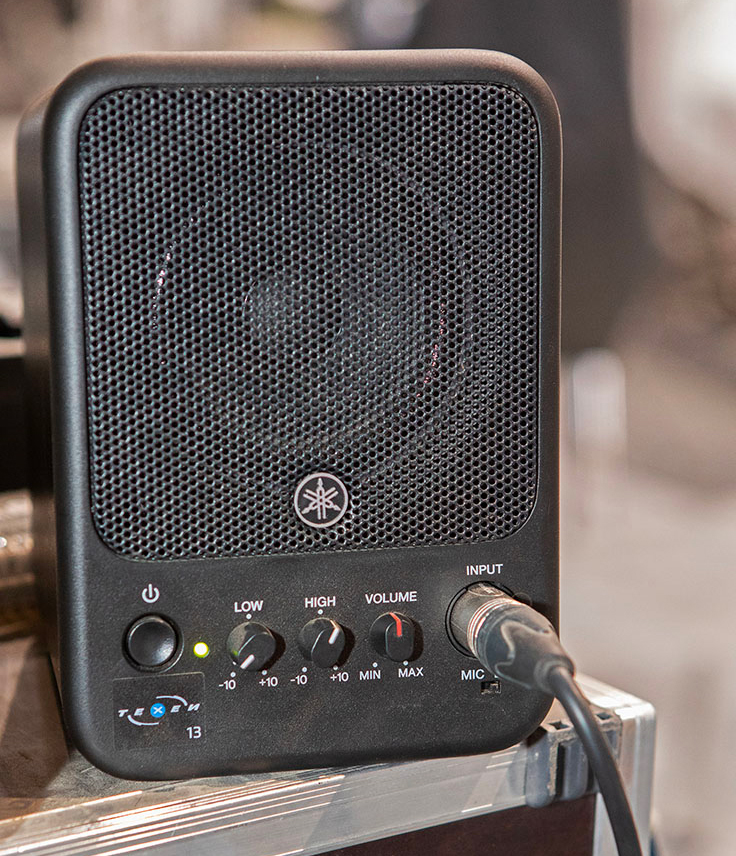
The network is connected via TWINLANe with fibre between the two consoles and the two RPio units, and via Dante for the two Rios and the FoH and monitor channels. The network is fully redundant.
SLU : Speaking of networks…
Thomas Goeuriot : We have a distribution point at FoH, other points in the pit at stage-left and stage-right, a point on the mezzanine for the amplifiers of the main system and two network distribution points at the top of the stands for all the columns and other surround enclosures.
Arte’s OB van has an Auvitran AVBx7 in the pit to convert the Dante into MADI. They take some direct signals and specific premixes that are routed into the Dante for them.

SLU : You’re working with Cisco switches for the Dante…
Thomas Goeuriot : This works very well. We have a strategy in place where, if there is a problem, any technician can react in three quick steps. We have a network of SW1 primary switches that distribute the primary everywhere.
We have redundant devices and, by default, we also have a network for the secondary where everyone is connected to a trunk. It takes a bit of time to set up, but it works well.
We’ve just opted out of using the network’s own connections by transferring everything to more secure connections.
Texen’s specifications were to deliver a reliable and functional installation for the Festival, which will run it for a month, so we did what was necessary.

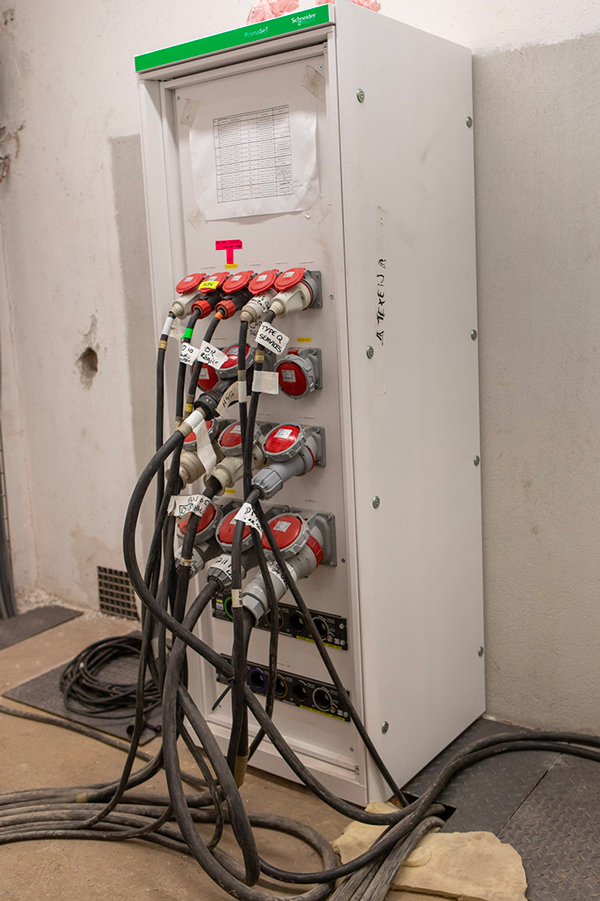
SLU : The room was found to be completely stripped of copper. Everything had to be rewired?
Thomas Goeuriot : Exactly, it was done in such a way as to be able to stage the five dates, carry out all the rehearsals and guarantee the safety of the public, but without the wiring being permanent.
This choice was prompted by a certain concern about the safety of the Stadium at the end of the Festival. Let’s remember that everything had disappeared to the point that initially the power supply was carried out thanks to generators before EDF installed a new transformer for the hall.
SLU : What’s that little marquee at the entrance with the timpani? It looks like a miniature orchestra
Thomas Goeuriot : That’s what it is. This is one of the special features of this symphony. Mahler wrote specific passages that must be performed as if they were coming from the wings.
As we don’t have any stage wings here and, since placing this ensemble in the pit would not have been faithful to the composition or provided the desired effect, it was placed in the Stadium enclosure but outside the auditorium, on the access side to the stands, and it is AFC Image that gives the impression that it is playing “elsewhere”.

On the day of our visit, it is Quentin Delisle handling the PM7 and the object-based mixing designed by Rémy. He explains this particular aspect to us.
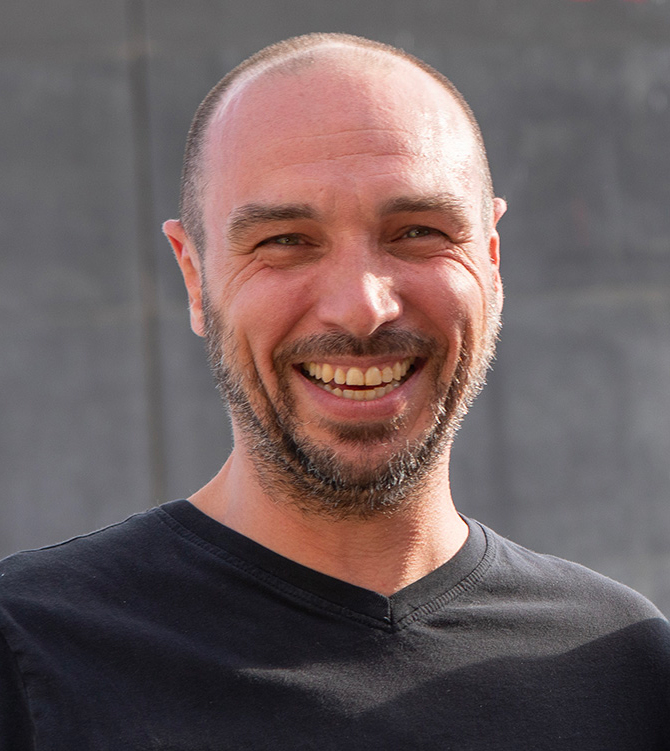
SLU : Is this the first time you’ve worked with immersive mixing of classical music?
Quentin Delisle : Almost, but not quite. (smiling)
SLU : Tell us how the reverberation of the orchestra is handled. Is it mainly created by the room or is there an addition through AFC?
Quentin Delisle : The reverb in AFC Image engulfs the audience. The sources are localised by the main system and “wetted” by the reverb but the rest of the sound system – all the sides, downfills and rear speakers – supplements the immersive system by playing only the reverb. What comes out of the console is dry.
SLU : How is the reverb created?
Quentin Delisle : We decide which source, therefore which object, goes into the Image reverb generator. For the algorithm itself, we worked on the size of the room, its type, the placement and then we balanced the level to keep it natural.

SLU : Are the rather resonant acoustics of the room, which also lacks any acoustic treatment, difficult to work with?
Quentin Delisle : No, it has its own reverb time and acoustic characteristics, but in relation to what we generate with AFC, it’s a complement.
Sébastien Noly, the FoH assistant and liaison between the technical and the artistic departments, or the other way round, is an important element in this production and has cross-disciplinary skills.
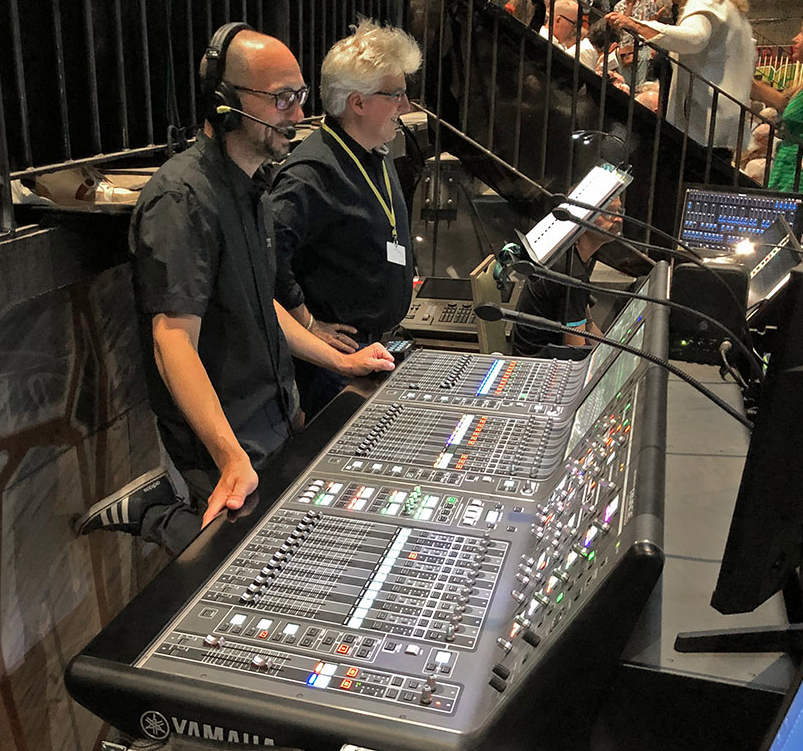
Sébastien Noly : The rear section, that is, the stage end of the room, doesn’t get very acoustically excited, so it is not a problem. Before the dirt was poured in, we measured an RT of three seconds with a rise to five seconds at 125 Hz, due to the cubic shape and its inherent modes.
With the soil in here, on the other hand, the absorption is very significant, considering its surface, and this gave us the possibility to add a relevant and creative reverberation that blends well with what the room provides naturally.
François Deffarges : Yamaha has taken real rooms with different shapes and coloration, and you have selected the impulse responses of a large symphonic room by reconfiguring many of the values to create this match.
Quentin Delisle : Most of Rémy’s work was to calibrate the reverb, and then the mixing came almost naturally.
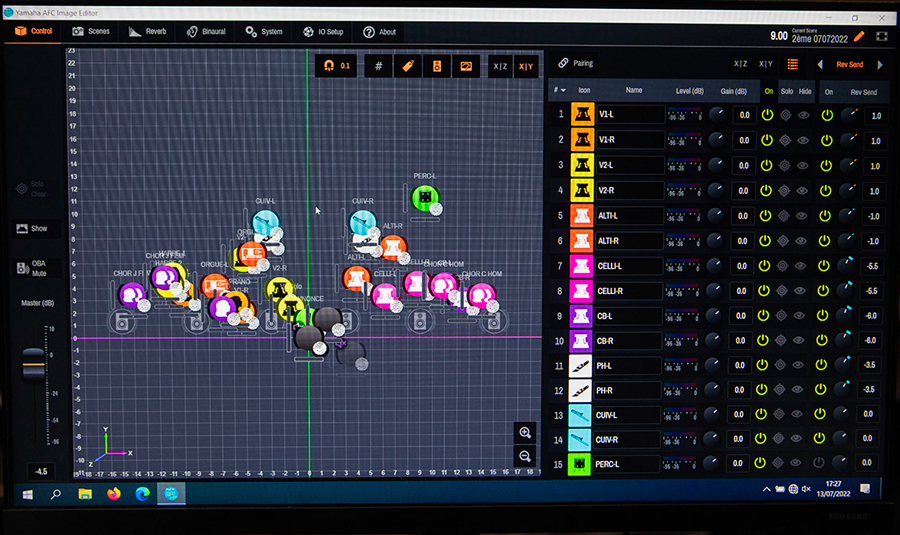
SLU : How did you assess the size of this room with respect to the composition?
Sébastien Noly : There was a lot of preparatory work and we have confidence in the talent of Rémy (Bréan). He created a 3D layout and François verified it in terms of the coverage.
There was also a scouting visit to the site at the end of April, together with the conductor Esa-Pekka Salonen and his assistant Aliisa Neige Barrière.
The Orchestre de Méditerranée was played in order to hear the imbalances inherent in the acoustics of the venue and we were able to integrate the amount of energy that the Orchestre de Paris, the Chorus of the Orchestre de Paris and the Youth Choir of Paris would have to deliver.
François Deffarges : We made sure that the electroacoustic installation was appropriate to the location and the performance, and, above all, appropriate for the conductor.
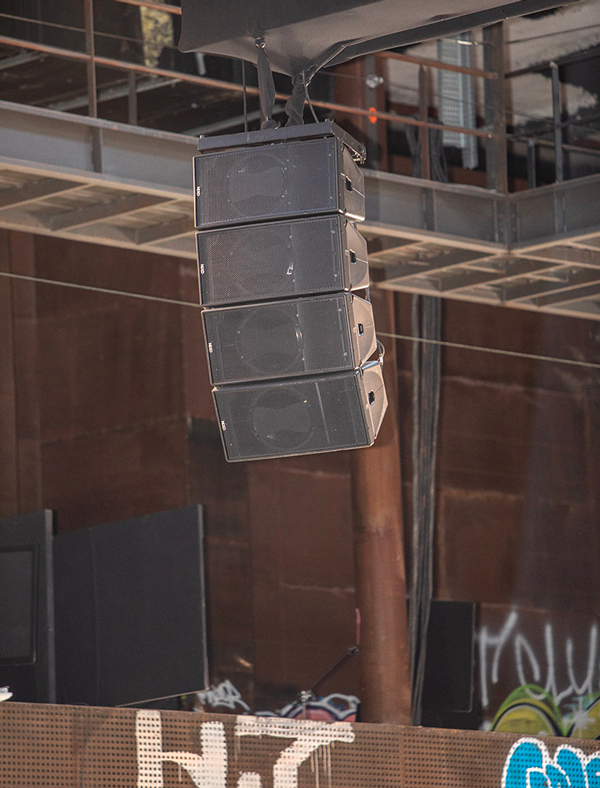
SLU : This electroacoustic integration is total, or does the orchestra manage to provide enough to only need to be “filled out”.
Quentin Delisle : I create a thorough balance of the orchestra in the spacialized amplification. The strings are the instruments that require the most amplified support, much more so than brass or percussion, but all of them need to feed the AFC reverb and take their place in the main system in order to be localized by the audience.
SLU : How do you manage the dynamics in the fortissimo passages?
Quentin Delisle : Our role is to provide the conductor with an acoustical environment, and then it’s up to him to make it his own and to work as if he were in a concert hall. I don’t play around with the dynamics. I only use multi-band compression to keep the spectral balance during the fortissimos.
Sébastien Noly : Nothing is modified and the degree of freedom that Quentin allows himself is in the order of 1 dB. On the other hand, the spatial modelling linked to the object-based amplification brings a lot of precision to the sound.
François Deffarges : The proximity of the orchestra’s miking allows greater dynamic range than would be the case if more air was left between instruments and transducers…

Quentin Delisle : Exactly, and this is where we intervene to attenuate certain defects linked to the sound capture, and then only when very high levels are encountered, but this job is done in collaboration with the conductor. He has benchmarks that have been established with his assistant who has followed all the rehearsals in the venue, and the final mix remains in his hands.
SLU : How many microphones are in the pit?
Quentin Delisle : There are about 90 and each section of instruments is divided into groups of several desks. There are eight on the first violins, seven on the second violins, six on the violas, four on the ’cellos, eight individual double basses and so on. Each group of desks is a stereo object in Image.
We can’t resist the pleasure of talking to Philippe Delcroix, the Technical Director of the Festival d’Aix, who was present at the venue.

SLU : How did you decide on the Stadium as the venue for Resurrection?
Philippe Delcroix : In 2018 we welcomed a new Festival d’Aix director, Pierre Audi, and he asked us to find unusual places to produce works that are equally unusual.
I knew about the existence and the sad history of the Stadium, so we went to visit it with him without really believing in it, but he was fascinated by this venue. Remember, this was in 2018.
The city government of Vitrolles was quick to agree, so together we set out to find funding, with the intention of investing in an industrial wasteland and avoiding excessive costs for both the city and the Festival.
Our goal was to make the venue accessible and safe. As is often the case, we went beyond this with the assistance of the city of Vitrolles and, even if everything is far from being restored, the Stadium has come back to life.

SLU : Were you interrupted by Covid?
Philippe Delcroix : Of course, and when we came back to the Resurrection project, I realised that the size of the room and the project meant that we couldn’t go it alone. It was therefore necessary to join forces with a certain number of partners, vendors and brands.
So, for the sound, I called Rémy Bréan, whom we’ve known for a long time and who, in my opinion, is one of the best, and then Texen: “are you with us, guys?”; and finally Nexo and Yamaha, with whom we’ve been collaborating for a long time for Parades. And the planets were aligning, even if we didn’t know yet that it would be more complicated than expected.
SLU : But everything is going well and we will meet again tonight for the final of the five concerts…
Philippe Delcroix : And it sounds incredible because the Orchestre de Paris and Esa-Pekka Salonen sound great right from the start, Rémy has done his part again and the technology deployed by Yamaha and Nexo is top notch. More than just five concerts, Resurrection is a real experience because the Stadium and Castellucci are more than just a show, you are caught up and enveloped by a sound of rare finesse.
SLU : Aix is becoming a festival with a ubiquitous yet discreet approach to technology.
Philippe Delcroix : It’s not possible otherwise, we’re talking about classical music and even more so about opera, and augmented acoustics is a delicate subject that conductors are increasingly taking on. It is up to us to surround ourselves with technicians, manufacturers and quality vendors so that this technical support is subtle.
SLU : What will be left behind after this great adventure at the Stadium…
Philippe Delcroix : For me, it’s already a personal satisfaction to have succeeded in bringing life back into a place that has been closed for more than 20 years, and then the certainty of still being there in 2023, 24 and maybe 25.
Dulcis in fundo
The show begins and we discover that the swallows or, actually, the swifts that have been circling the room for the last few minutes and that I have been searching for with my eyes, are in fact just very realistic samples.

The cicadas, real ones in this case, take advantage of the open doors at the back of the stage and a bit to the sides, to intrude into Resurrection as well. What follows is a real contrasting mix of sensations magnificently carried by the room, the smell of the earth, the music and the power of the sound design.
Without really calling it envelopment, the orchestra and the choirs open up and are reproduced infinitely better than with a left/right. The spatial logic is respected, the sound is frontal with localisation consistent with what we see. The M6s pull the image down well and one quickly forgets the presence of the six flown arrays.

The voices emerge perfectly with a natural quality and precision that only a very good object-matrix system and a good mix can achieve.
The acoustics of the room are well masked, enhanced by the very beautiful and dense AFC Image. As a result, we start to get greedy and wonder what would have been the result of a little more downfill, rear and side reinforcement and an even more advanced spatial localisation of objects.
The closing dynamic, unsettling with percussion and the organ that strikes its lowest note in the eight MSUB18 units, is a masterly conclusion to this unique and successful show.
The chemistry between the composition, the performers, the scenography and the venue was made possible by solid, innovative and masterful technical choices. Congratulations to the teams from Aix and Texen, and to Rémy Bréan, as well as to the Yamaha and NEXO partners.
Sound crew:
Rémy Bréan : Sound design and FoH engineer
Sébastien Nolly : Musical consultant
Quentin Delisle : FoH engineer
Séverine Gallou : Monitor engineer
With the NEXO/Yamaha team in support and the Festival team in operations
We couldn’t leave without talking to Thomas Goeuriot and Texen, too many good vibes, competence and humour emanate from this man, so it’s Thomas’ time!
SLU : But first, how did you get into Texen…
Thomas Goeuriot : This takes us back to 1998 when I moved to the region as a contract technician, coming out of three years at Zingaro in the good old days when we had carte blanche on the technical side. My first encounter with Texen was because of a quote for an extension of the FRB patch at the Jeu de Paume where I was working, a theatre that had been fitted out by this same company.
SLU : And then?…
Thomas Goeuriot : A few years later, in 2007, I was asked to join the Grand Théâtre de Provence, which had just been built and had everything a technician could dream of at the time: PM5D, AD8 HR, Ethersound, Auvitran…
Of course I said yes and took advantage of the opportunity to renew ties with Texen, with whom we subsequently worked a lot to make this very innovative technique operational for the theatre’s first big projects.
SLU : Practical skills are in demand…
Thomas Goeuriot : …I ended up moving to Texen in 2016 as a Sound Manager, and three years later I replaced a manager who left the company.
SLU : You can climb up the ladder quickly!
Thomas Goeuriot : Texen is a cooperative, which partly explains this. The employees are the majority partners and power is controlled democratically.
SLU : What about NEXO?
Thomas Goeuriot : The collaboration with Nexo started when Texen was born in 1981. But I was still in high school then. (laughing!)
SLU : (His phone rings…) You seem to be running quite a bit!
Thomas Goeuriot : With the job I have, I shouldn’t even be here; we’re a relatively small company that does a lot of things, but I really don’t want to stop being out in the field, even if it sometimes gets to be hard.
SLU : Texen is essentially an integrator?
Thomas Goeuriot : We do a lot of that and always have, even before the Covid (he smiles). We don’t do stand-alone shows, that’s not our job.
We have clients, we install equipment for them, we sell it to them, we complete their fleet by renting it, and when we do a complete package, as with the Festival d’Aix, we do big performances like Parades on the Cours Mirabeau, which opens the Festival every year, or the Stadium, which is a very large operation for us.
And I’m more than happy to admit that without the help of NEXO, it wouldn’t be possible. Let’s also add MKPlus, a sound service from the Lyon region (Brignais), who is reactive and has a great NEXO fleet. Since 2016 we have been exchanging a lot of equipment.
Links:
– Watch the Arte TV recording of Resurrection
– Discover an excellent subject on the Stadium available on YouTube
– More info on Texen
– Visit the NEXO website
– Visit the Yamaha website
– Visit the AFC Image website








